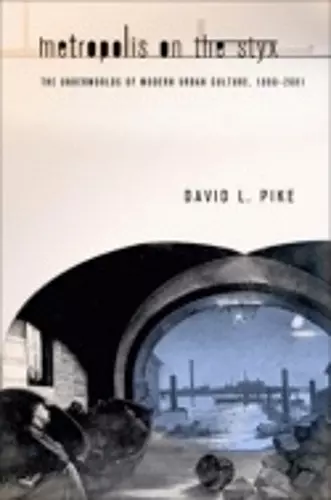Metropolis on the Styx
The Underworlds of Modern Urban Culture, 1800–2001
Format:Paperback
Publisher:Cornell University Press
Published:5th Oct '07
Currently unavailable, and unfortunately no date known when it will be back
This paperback is available in another edition too:
- Hardback£108.00(9780801444906)

In Metropolis on the Styx, David L. Pike considers how underground spaces and their many myths have organized ways of seeing, thinking about, and living in the modern city. Expanding on the cultural history of underground construction in his acclaimed previous book, Subterranean Cities, Pike details the emergence of a vertical city in the imagination of nineteenth-century Paris and London, a city overseen by hosts of devils and undermined by subterranean villains, a city whose ground level was replete with passages between above and below. Metropolis on the Styx brings together a rich variety of visual and written sources ranging from pulp mysteries and movie serials to the poetry of Charles Baudelaire and the novels of Marcel Proust, F. Scott Fitzgerald, and Elinor Glyn to the broadsheets and ephemera of everyday urban life. From these materials, Pike conjures a working theory of modern underground space that explains why our notions about urban environments remain essentially nineteenth-century in character, even though cities themselves have since changed almost beyond recognition.
Highly original in subject matter, methodology, and conclusions, Metropolis on the Styx synthesizes a number of critical approaches, periods of study, and disciplines in the analysis of a single category of space—the underground. Pike studies the built environments and the textual and visual ephemera (including little-known or unknown archival material) of Paris, London, and other cities in conjunction with canonical modern literature and art. This book integrates a rich visual component—photographs, movie stills, prints, engravings, paintings, cartoons, maps, and drawings of actual and imagined subterranean spaces—into the fabric of the argument.
Pike has a collector's passion for viaducts, arches, quarries, tunnels, sewers, and arcades, and for the many and varied things that nineteenth-century observers had to say about them. His enthusiasm is especially contagious in an era when long-term government neglect of infrastructure has filled the news with breached levees, collapsing bridges, neighborhoods falling off the power grid, and other end-of-the-world style disasters.... Following the lead of Walter Benjamin, Pike reflects brilliantly on the devil in Baudelaire, while he also uncovers plausible devil surrogates in Eugene Sue's Les Mysteres de Paris, in the Gothic genre (relocated from the country to the city), in detective stories (the detective as another limping devil, taking off the housetops to reveal the hidden world of connections), in film noir and neo-noir.
-- Bruce Robbins * Minnesota Review *Pike's book presents us with both a new of of spatializing capitalist modernity and a truly impressive archive of texts about the city and its underground spaces. The carefully chosen epigraphs dotted throughout each chapter speak volumes on their own, and the astonishing range of works and phenomenon analyzed within each chapter (from journalism to panoramas to the trench cities of World War I) are illustrated by many rare and wonderful images (110 in total).... Metropolis on the Styx's ambitious purview makes the density of material it analyzes necessary, for its arguments reach across space (from London to Paris) and time (spanning two full centuries).... All this breadth and depth makes for a work that is profoundly interdisciplinary, bringing together the interests of urban studies, English and comparative literature, history, art history, architecture, and geography as if to propose a new field—subterranean studies—and provide enough material to keep it going for some time.
-- Tanya Agathocleous * Victorian Studies *This is an engaging and erudite volume throughout. Pike avoids becoming overly mired in a quagmire of theoretical considerations, and his arguments are firmly grounded in the urban landscapes that are the subject of his analysis. His work is a welcome addition to a long line of literature critically concerned with the rise of the modern industrial metropolis.... It is recommended for any scholar interested in the form of the urban world as a product of technology and the evolution of our attitudes about it. I expect that it will find wide use in upper division courses in American studies, geography, and urban studies.
-- John P. McCarthy * Technology and CultuISBN: 9780801473043
Dimensions: 235mm x 155mm x 22mm
Weight: 907g
400 pages